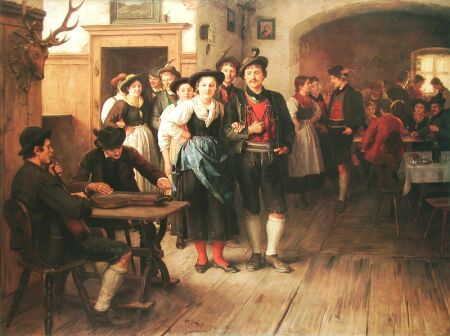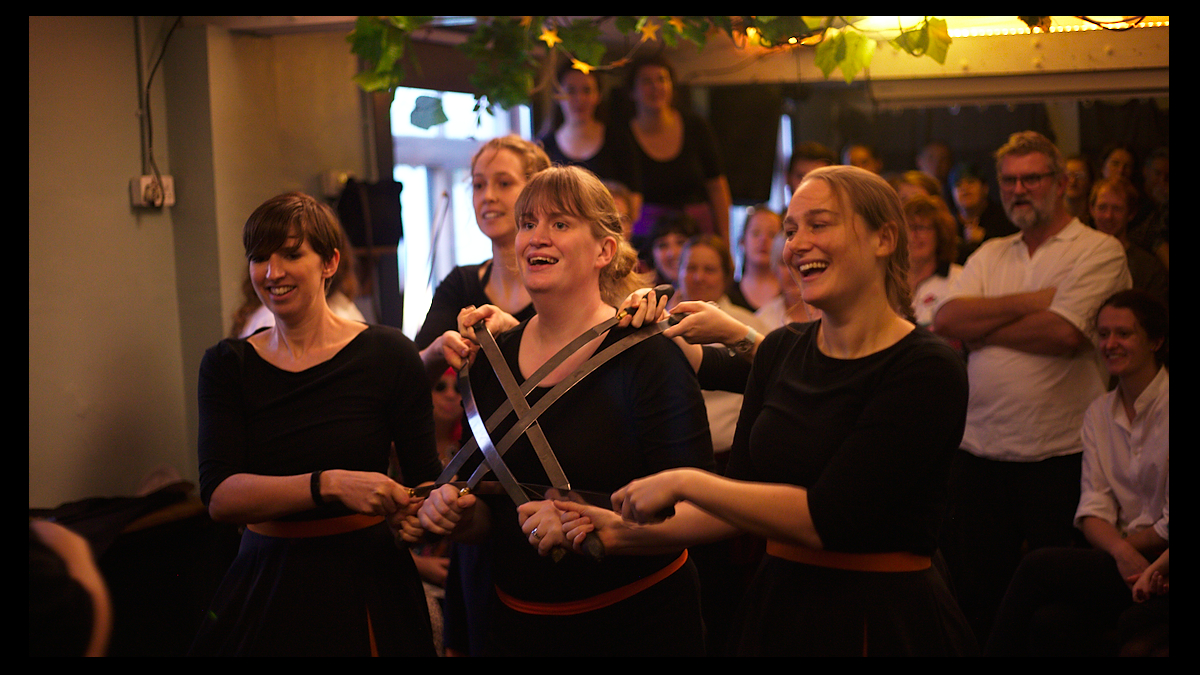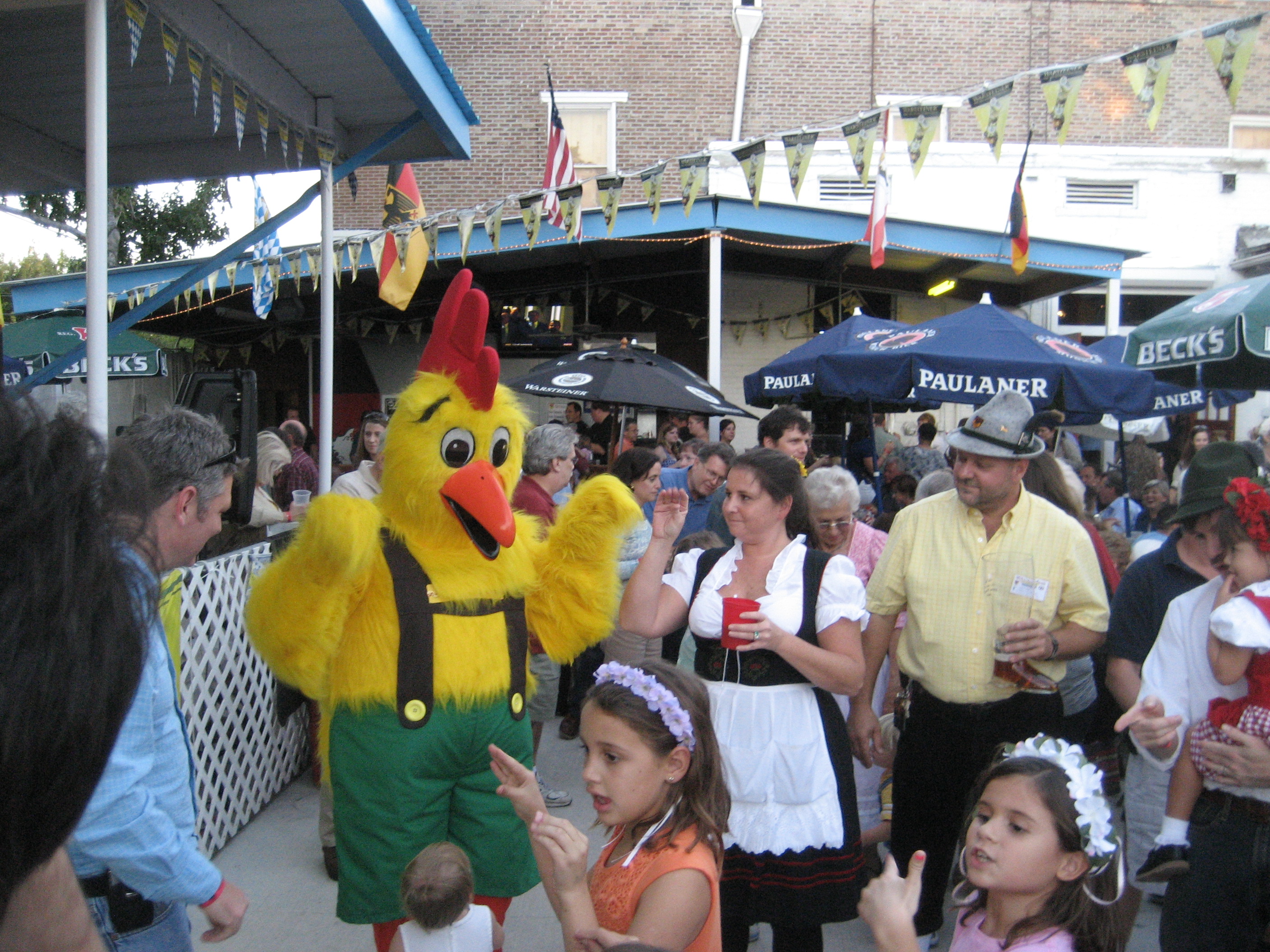|
Schuhplattler
The Schuhplattler is a traditional style of folk dance popular in the Eastern Alps, specifically originating in Upper Bavaria, Tyrol, and Salzburg (state), Salzburg. In this dance, the performers stomp, clap, and strike the soles of their shoes (''Schuhe''), thighs, and knees with their hands held flat (''platt''). The more than 150 basic Schuhplattlers, as well as marches and acrobatic feats, are often interspersed with the basic dance in performance. They may be seen today in Europe and in German-immigrant communities around the world. While the Schuhplattler is still largely performed by adults, it has become increasingly popular with youngsters, who love its colorful costumes and its bouncing, leaping, kicking, and choreographed horseplay. History and style One of the earliest accounts of the Schuhplattler may date from 1030 AD, when a monk in the Tegernsee Abbey of Bavaria described a village dance containing leaps and hand gestures. Over the centuries, the form gradua ... [...More Info...] [...Related Items...] OR: [Wikipedia] [Google] [Baidu] |
Dirndl
A dirndl () is a feminine dress which originated in German-speaking areas of the Alps. It is traditionally worn by women and girls in some Alpine regions of Austria, Germany, Italy, Liechtenstein and Switzerland.Anette Dralle & Christiane Mackenzie (eds.): ''Standardwörterbuch Plus Englisch mit Wörterbuch-App: Englisch-Deutsch, Deutsch-Englisch'', PONS, Stuttgart, 2019, p. 714. A modern dirndl consists of a close-fitting bodice with a low neckline, a blouse worn under the bodice, a wide high-waisted skirt and an apron. The dirndl is regarded as a folk costume (in German ''Tracht''). It developed as the clothing of Alpine peasants between the 16th and 18th centuries. Today it is generally considered traditional dress for women and girls in German-speaking parts of the Alps, with particular designs associated with different regions. The usual masculine tracht counterpart of the dirndl is lederhosen. In the late 19th century the dirndl was adapted by the upper and middle clas ... [...More Info...] [...Related Items...] OR: [Wikipedia] [Google] [Baidu] |
Austrian Folk Dancing
Austrian folk dancing is mostly associated with Schuhplattler, Ländler, polka and waltz. However, there are other dances such as Zwiefacher, ''Kontratänze'' and ''Sprachinseltänze''. Types of dance In Austria, folk dances in general are known as ''Folkloretänze'', i.e. "folklore dances", whereas the Austrian type of folk dance is known as ''Volkstanz'' (literally "folk dance"). Figure dancing is a type of dance where different figures are put together with a certain tune and given a name. Round dancing, which includes the waltz, the polka, Zwiefacher etc., involves basic steps which can be danced to different tunes. In folk dancing, the waltz and the polka are in a different form to standard ballroom dancing. ''Sprachinseltänze'' (literally "language island dances") are those dances which are actually by German-speaking minorities (see German as a Minority Language) living outside Austria, but which originate in Austria, e.g. those of Transylvania. One example of th ... [...More Info...] [...Related Items...] OR: [Wikipedia] [Google] [Baidu] |
Folk Dance
A folk dance is a dance that reflects the life of the people of a certain country or region. Not all ethnic dances are folk dances. For example, Ritual, ritual dances or dances of ritual origin are not considered to be folk dances. Ritual dances are usually called "religious dances" because of their purpose. The terms "ethnic" and "traditional" are used when it is required to emphasize the cultural roots of the dance. In this sense, nearly all folk dances are ethnic ones. If some dances, such as polka, cross ethnic boundaries and even cross the boundary between "folk" and "ballroom dance", ethnic differences are often considerable enough to mention. Background Folk dances share some or all of the following attributes: *Dances are usually held at folk dance gatherings or social functions by people with little or no professional training, often to traditional music. *Dances not generally designed for public performance or the stage, though they may later be arranged and set for ... [...More Info...] [...Related Items...] OR: [Wikipedia] [Google] [Baidu] |
Austrian Folk Dances
Austrian folk dancing is mostly associated with Schuhplattler, Ländler, polka and waltz. However, there are other dances such as Zwiefacher, ''Kontratänze'' and ''Sprachinseltänze''. Types of dance In Austria, folk dances in general are known as ''Folkloretänze'', i.e. "folklore dances", whereas the Austrian type of folk dance is known as ''Volkstanz'' (literally "folk dance"). Figure dancing is a type of dance where different figures are put together with a certain tune and given a name. Round dancing, which includes the waltz, the polka, Zwiefacher etc., involves basic steps which can be danced to different tunes. In folk dancing, the waltz and the polka are in a different form to standard ballroom dancing. ''Sprachinseltänze'' (literally "language island dances") are those dances which are actually by German-speaking minorities (see German as a Minority Language) living outside Austria, but which originate in Austria, e.g. those of Transylvania. One example of this ... [...More Info...] [...Related Items...] OR: [Wikipedia] [Google] [Baidu] |
Ländler
The Ländler () is a European folk dance in time. Along with the waltz and allemande, the ländler was sometimes referred to by the generic term German Dance in publications during the late 18th and early 19th centuries. Despite its association with Germany, the ländler was danced in many European countries. Composers from a variety of European nations wrote music for the ländler dance; including Austria, Switzerland, Bohemia, Moravia, Slovenia and northern Italy in addition to Germany. History The ländler is a partner dance that strongly features hopping and stamping. It might be purely instrumental or have a vocal part, sometimes featuring yodeling. When dance halls became popular in Europe in the 19th century, the Ländler was made quicker and more elegant, and the men shed the hobnail boots that they wore to dance it. Along with a number of other folk dances from Germany and Bohemia, it is thought to have influenced the development of the waltz. A number of cla ... [...More Info...] [...Related Items...] OR: [Wikipedia] [Google] [Baidu] |
Lederhosen
The term Lederhosen (; , singular in German usage: ''Lederhose'', ; lit. "Leather Pants") is used in English to refer specifically to the traditional leather breeches worn by men in Southern Germany (specifically in Bavaria and Swabia), Austria, South Tyrol and Slovenia. The term '' Trachten Lederhose'' is often used in German to avoid confusion with other types of leather pants. The longer trousers are generally called ''Bundhosen''. History Lederhosen probably originated during the late Middle Ages. They were worn for hard physical work, as they were more durable than fabric garments. Today, they are mostly worn as leisurewear. Lederhosen and dirndl attire are also common at Oktoberfest events around the world. ''La Couturière Parisienne'' stated that lederhosen were originally not exclusively Bavarian garments, but were worn all over Europe, especially by riders, hunters, and other people involved in outdoor activities. The flap (drop front), though, may have been a un ... [...More Info...] [...Related Items...] OR: [Wikipedia] [Google] [Baidu] |
Chicken Dance
The "Chicken Dance", also known and recorded as Der Ententanz, Tchip Tchip, Vogerltanz, the Bird Song, the Chicken Song, the Birdie Song, the Bird Dance, Danse des Canards, the Duck Dance, El Baile de los Pajaritos, O Baile dos Passarinhos, Il Ballo del Qua Qua, Check Out the Chicken, or Dance Little Bird, is an oom-pah song; its associated fad dance has become familiar throughout the Western world. The song was composed by accordion player Werner Thomas from Davos, Switzerland, in the 1950s. The Chicken Dance is a well-known drinking and dancing song at American Oktoberfest events. It is also a popular dance at weddings, particularly in whose culture includes polka music. Over 140 versions have been recorded worldwide, including some that were released by Walt Disney Records, together making an estimated 40,000,000 records or more pressed. Composer credits and publishing rights The original name of the song was "Der Ententanz" (The Duck Dance), composed by the Swiss accordion ... [...More Info...] [...Related Items...] OR: [Wikipedia] [Google] [Baidu] |
Hopak
Hopak (, ) is a Ukrainian folk dance originating as a male dance among the Zaporozhian Cossacks, but later danced by couples, male soloists, and mixed groups of dancers. It is performed most often as a solitary concert dance by amateur and professional Ukrainian dance ensembles, as well as other performers of folk dances. It has also been incorporated into larger artistic opuses such as operas, ballets and theatre. The hopak is often popularly referred to as the "List of national dances, National Dance of Ukraine" and has become very popular in Poland. There are similar folkloric dance tunes known as ''Sirmpa'' in Leros, Greece. Etymology The name ''hopak'' is derived from the verb ''hopaty'' () which means "to jumping, hop", as well as the corresponding exclamation ''hop!'' () which can be uttered during a jump as an expression of surprise or amazement. History Medieval history The Hopak developed initially as a Cossacks, Cossack social dance (, Romanization of Ukraini ... [...More Info...] [...Related Items...] OR: [Wikipedia] [Google] [Baidu] |
Die Zeit
(, ) is a German national weekly newspaper published in Hamburg in Germany. The newspaper is generally considered to be among the German newspapers of record and is known for its long and extensive articles. History The first edition of was first published in Hamburg on 21 February 1946. The founding publishers were Gerd Bucerius, Lovis H. Lorenz, Richard Tüngel and Ewald Schmidt di Simoni. Marion Gräfin Dönhoff joined as an editor in March 1946. She became publisher of from 1972 until her death in 2002. In 1983 she was joined by former Chancellor of Germany (1949–), German chancellor Helmut Schmidt. Later Josef Joffe and former German federal secretary of culture Michael Naumann joined them as well. The paper's publishing house, Zeitverlag Gerd Bucerius in Hamburg, is owned by the Georg von Holtzbrinck Publishing Group and Dieter von Holtzbrinck, Dieter von Holtzbrinck Media. The paper is published weekly on Thursdays. As of 2018, has additional offices in Brussels, ... [...More Info...] [...Related Items...] OR: [Wikipedia] [Google] [Baidu] |
Saying
A saying is any concise expression that is especially memorable because of its meaning or style. A saying often shows a wisdom or cultural standard, having different meanings than just the words themselves. Sayings are categorized as follows: * Aphorism: a general, observational truth; "a pithy expression of wisdom or truth". ** Proverb, adage or saw: a widely known or popular aphorism that has gained credibility by long use or tradition. ** Apothegm/Apophthegm: "an edgy, more cynical aphorism; such as, 'Men are generally more careful of the breed of their horses and dogs than of their children.'" * Axiom: a proposition that commends itself to general acceptance; a well-established or universally conceded principle; a maxim, rule, or law.''Oxford English Dictionary'' Online, accessed 2012-04-28 * Cliché or bromide: an unoriginal and overused saying. ** Platitude: a cliché that is unsuccessfully presented as though it were meaningful, original, or effective. * Epigram: a cle ... [...More Info...] [...Related Items...] OR: [Wikipedia] [Google] [Baidu] |





